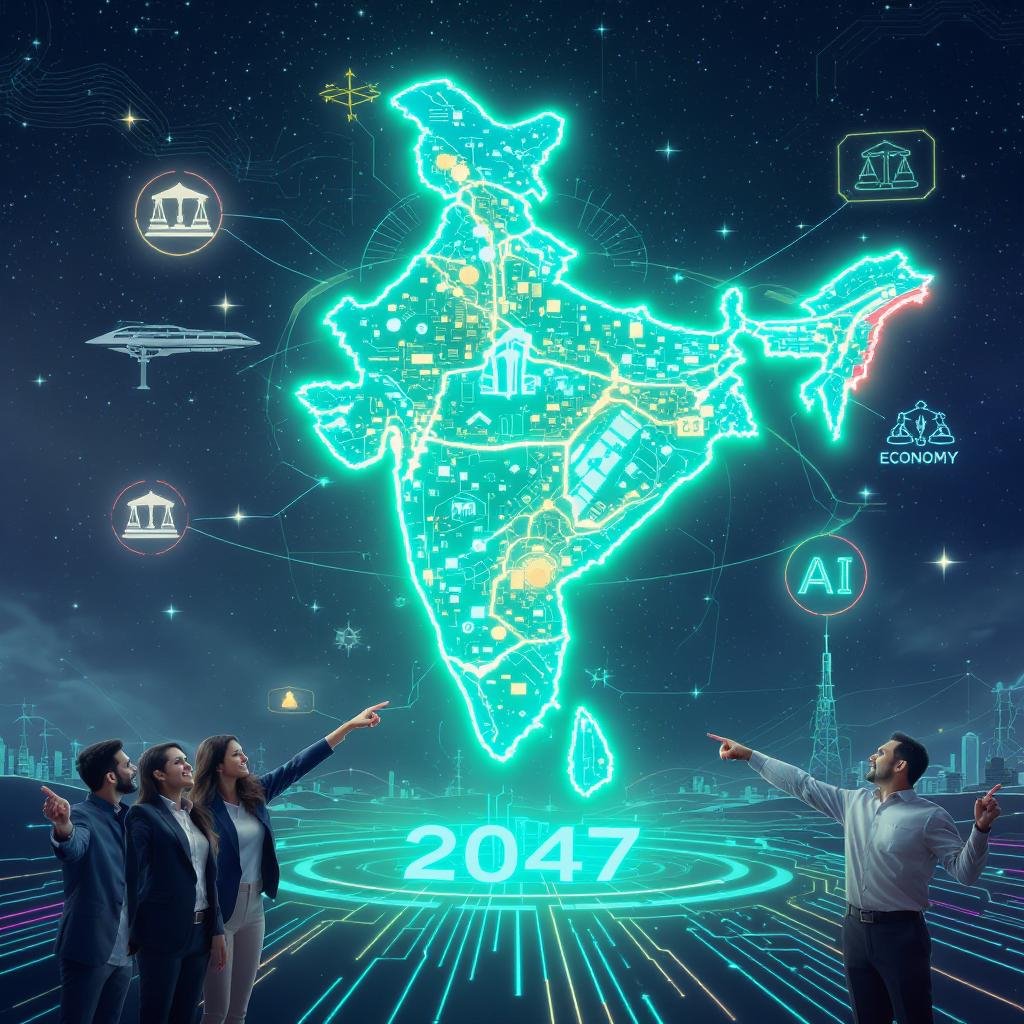Will India become Viksit Bharat by 2047? Explore roadmap on growth, reforms, innovation, and India’s evolving economic resilience.

India @ 2047: The Pursuit of Viksit Bharat
As India aims to become a developed nation by its 100th year of independence in 2047, the question isn’t merely “Will we get there?” but rather, “What will it take to get there?” According to Sanjeev Sanyal, Member of the Prime Minister’s Economic Advisory Council, India’s journey towards Viksit Bharat is not about overnight miracles—it’s about compounding progress, strategic reforms, and embracing creative risk.
The Power of Compounding: India’s Secret Weapon
India doesn’t need to become the world’s top economy overnight. As Sanyal puts it, trying to do that could “blow up the system.” What India needs is consistency, direction, and the discipline of compounding growth. Just like China in its prime, India’s steady 6.5-7% growth can create exponential results if sustained over decades.
“You don’t need 20% growth. You need stable compounding.”
Infrastructure: The Foundation of Development
Intercity First, Intracity Now
India’s initial focus was on highways, airports, and intercity connectivity. Now, urban development is the frontier. Cities like Mumbai and Delhi are undergoing transformative projects: coastal roads, metro lines, and integrated urban transit.
However, one missing element is often overlooked: walkability. Public transport systems are only effective if the first and last mile can be walked. Sidewalks, green corridors, and safe paths aren’t luxuries—they are infrastructure essentials.
Innovation & Risk-Taking: Fuel for Young India
Sanyal cautions against turning ambition into anxiety. Encouraging entrepreneurship, rewarding experimentation, and ending the obsession with rigid paths like UPSC exams are vital. He believes India’s demographic dividend can only be realized if youth are empowered to take risks.
“The skill isn’t what you did. It’s the fact you tried, failed, adapted, and tried again.”
Judicial Reform: The Hidden Hurdle
Despite economic progress, India’s judicial system remains a bottleneck. Contract enforcement, civil dispute resolution, and overall legal efficiency are essential to attracting investment, securing rights, and sustaining ease of doing business.
“Every family has a court case going on for 30 years. That’s the real constraint.”
Viksit Bharat : Macroeconomic Stability: Growth Without Collapse
India must grow fast, but wisely. As global volatility persists (wars, trade battles, inflation), Sanyal advises caution against over-leveraging or over-expanding. Fiscal discipline, smart subsidies, and avoiding policy overreach will keep the economy resilient.
Viksit Bharat : Reforms, Resilience, and the Road Ahead
From cleaning up the banking sector with Insolvency & Bankruptcy Code, to pioneering green accounting two decades ago, Sanjeev Sanyal emphasizes creative destruction and adaptability. India’s future depends on staying agile, experimental, and reform-oriented.
“I don’t want to reach an ideal endpoint. I want to engage with the chaos of reality.”
Viksit Bharat 2047: Not a Dream, But a Design
India can achieve $29–$31 trillion GDP by 2047—but it requires:
- Continued process reforms
- Judicial and governance overhaul
- Smart infrastructure investment
- Empowering innovation
- Macroeconomic discipline
The world may be turbulent, but India’s resolve must be calm, focused, and compounding.
“India is a ship. Let’s keep fixing the engine, steering smartly, and waiting for the right wind.”
#India2047, #ViksitBharat, #DevelopedIndia, #IndianEconomy, #MakeInIndia, #InfrastructureDevelopment, #YouthPowerIndia, #DigitalIndia, #SkillIndia
#SustainableDevelopment, #IndiaGrowthStory, #SmartCities, #AtmanirbharBharat
